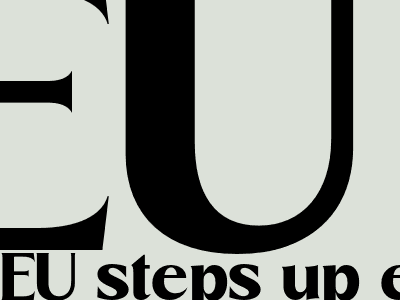
EU Steps Up Efforts to Abate Methane Emissions: A Comprehensive Overview
Introduction
Methane, a greenhouse gas with a global warming potential 80 times greater than carbon dioxide, is under scrutiny at the ongoing COP29 summit. The European Union (EU) is among the global leaders taking significant strides to curb methane emissions in collaboration with international partners.
This article provides an in-depth analysis of the EU's multifaceted approach to methane abatement, exploring initiatives, partnerships, and technological advancements.
EU Initiatives and Regulations
The EU has implemented several initiatives aimed at reducing methane emissions across sectors:
- EU Methane Strategy: Launched in 2020, this strategy outlines a comprehensive framework for reducing methane emissions by 35% below 2020 levels by 2030.
- Revision of the EU Emissions Trading System (ETS): The EU ETS includes provisions to reduce methane emissions from industrial installations, incentivizing investments in low-methane technologies.
- Fuel Quality Directive: This directive sets limits on the sulfur content of fuels, which helps reduce methane emissions in the transport sector by improving engine efficiency.
International Partnerships and Alliances
The EU recognizes the need for global collaboration in methane abatement:
- Global Methane Pledge: The EU is a signatory to the Global Methane Pledge, a global initiative to collectively reduce methane emissions by 30% by 2030.
- International Methane Emissions Observatory (IMEO): The EU supports the IMEO, a platform for sharing data, best practices, and technologies to improve global methane monitoring and mitigation.
- Partnerships with Developing Countries: The EU collaborates with developing countries through programs like the International Climate Initiative (IKI) to provide financial and technical assistance for methane abatement measures.
Technological Innovations
The EU encourages research and development in methane mitigation technologies:
- Advanced Monitoring Systems: The EU invests in developing technologies for precise methane detection and quantification, enhancing emission reporting and verification.
- Innovative Methane Reduction Technologies: EU-funded research projects explore innovative solutions for reducing methane emissions in the energy, agriculture, and waste management sectors.
- Carbon Capture and Utilization (CCU): CCU technologies capture methane from emission sources and utilize it for energy production or other industrial purposes.
Conclusion
The EU's multifaceted approach to methane abatement highlights its commitment to addressing the climate crisis. By implementing comprehensive initiatives, forging international partnerships, and investing in technological advancements, the EU drives global efforts to reduce methane emissions and mitigate its impact on global warming.
The ongoing efforts at COP29 underscore the urgency of international collaboration in methane abatement. The EU's leadership and commitment to sustainable practices serve as an inspiration for other nations to join the global effort to protect our planet and secure a cleaner future.